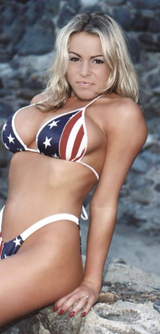
SUPER BOWL XLVII by Bruce Marshall of The Gold Sheet
|
As we prepare for Sunday’s Super Bowl XLVII in New Orleans between the Ravens and 49ers, we can’t help but reminisce. After all, as a reminder of just how long we have been producing THE GOLD SHEET, we were already into our tenth season of publishing when the first Super Bowl was played between the AFL champion Chiefs and NFL champion Packers on January 15, 1967. And despite all of the Super Bowls since, there can never be another first one, which we at TGS still hold as one of our most special memories as we conclude our 56th season.
Having the benefit of retrospect, we believe pro football in the ’60s was the most exciting gridiron era in our publishing history, mostly because of the presence of the fledgling AFL and its challenge to the pro football aristocracy represented by the older and established NFL. Indeed, the dynamics were so highly-charged when the rival leagues finally got together for that first Super Bowl game that we can hardly began to relate the sort of dimensions surrounding that Chiefs-Packers game to those who weren’t around, or can’t remember, what was going on in pro sports, football in particular, 46 years ago. Chiefs-Packers was somewhat hastily arranged, as the specifics of that first Super Bowl took a while to materialize after the previous summer’s merger announcement between the AFL and NFL. Pro football fans of the day (especially those of the AFL), however, had been waiting for the chance to see the two leagues compete against each other for a good while. Although it took until the 1966 season for the champs of the rival leagues to get together, the topic had been a hot one for the few preceding years. Sports Illustrated, in those days the validator of sports storylines, as ESPN would become a couple of decades later, devoted significant space late in the 1963 season wondering if the AFL powerhouse San Diego Chargers could compete against the NFL’s best, and what might happen in a “World Series” pro football game between champs of the rival leagues. The merger topic was a main storyline through the next few years until the July 1966 merger announcement. We have also long maintained that the first Super Bowl has been somewhat shortchanged by pro football historians, especially those who were not around to experience it. Which would include those who like to remind everyone that Chiefs-Packers was actually dubbed the “AFL-NFL World Championship Game,” and not the “Super Bowl.” Technically, that’s true, but Chiefs-Packers was in fact referred to as the Super Bowl by almost every media concern as well as at the game itself, with pre-game floats adorned with “Super Bowl” on the side. The fact is that nobody called it the “AFL-NFL World Championship Game,” even though that’s what the game tickets and game programs said. Although it took a couple of years for Commissioner Pete Rozelle to officially affix that “Super Bowl” label, and the attached roman numerals, to the championship game. We have also noted how some modern journalists wondered why, if the first AFL-NFL game was such a big deal, would a less-than-capacity crowd of “only” 61,946 show up at the cavernous L.A. Coliseum? While some have speculated that relatively high ticket costs ($12!) for the era might have had something to do with the somewhat-suppressed crowd count, keep in mind a few other dynamics, including the fact the site and date for the game were not set until less than two months before, well into November, more than halfway into the 1966 season. Moreover, local fans in the Los Angeles area were able to informally organize a one-time protest of the NFL’s TV blackout rules of the day, which kept the live telecast of the game off of local Los Angeles outlets for both CBS and NBC, which would each telecast the game nationally. The “blackout backlash” indeed became a lightning-rod topic in the L.A. media. Rather than shell out the cost of tickets, parking, and food at the L.A. Coliseum, many locals who wanted to see the game instead devised contraptions (mostly with aid of clothes hangers) for their TV antennas so they could “pirate” the telecast and get grainy reception from the nearest cities to broadcast the game, Santa Barbara and San Diego. We knew of other enterprising fans who also decided to simply drive to Santa Barbara or San Diego to watch the game in hotel or motel rooms. We, however, were among those 61,946 at the Coliseum that day, memories of which are forever etched into our minds. I remember seeing Rams and future Lions QB Bill Munson on the way into the Coliseum. Bob Hope was seated not far from us. Former QB great and then-Vikings HC (for a few more weeks) Norm Van Brocklin was also sitting a few rows behind me; at that age I was not privy to The Dutchman’s notorious temper, nor would I have any idea of it, so gracious was he in gladly signing his picture on the Vikings page of my game program (still in my possession!). That game program, by the way, still rates as one of the best-ever in my collection. The game itself was also a lot more compelling than many modern-day gridiron historians (some of whom weren’t around in January of 1967) would lead you to believe. The established narrative has long been the dominance of Vince Lombardi’s Packers, who won by a 35-10 count. But there was no hint of NFL primacy in an entertaining first half in which Kansas City would outgain Green Bay 181-164 and head into the break trailing by a mere 14-10 count. The teams in fact appeared very evenly matched. Until, that is, early in the third quarter, when the Chiefs committed a grievous error near midfield when QB Lenny Dawson’s short pass was picked off by DB Willie Wood, who returned the ball to the KC 5-yard line. Packer RB Elijah Pitts scored on the next play to stretch the lead to 21-10, and momentum had shifted. The Chiefs never threatened the rest of the afternoon, as Dawson was under siege from the Green Bay pass rush. The highlights from the remainder of the game involved a couple of plays that had nothing to do with the eventual outcome. Late in the third quarter, Packer RB Jim Taylor, a rough customer who did not take kindly to harsh treatment from defenders, threw a customary fit after one particular play. Unfortunately, he picked on the wrong Chief, big DT Buck Buchanan, who summarily grabbed Taylor and flung him to the ground like a rag doll. As tough as Taylor was, he was not about to intimidate Buchanan. Then, in the fourth quarter, controversial Chiefs DB Fred “The Hammer” Williamson (the future actor also seen today as a spokesman on TV commercials for the Wounded Warrior project) was temporarily KO’d by Packer bonus baby rookie RB Donny Anderson, whose knee connected with Williamson’s head as the Chief DB was trying to submarine tackle the Texas Tech rookie on a sweep. Which caused no shortage of glee among the Packers and their fans who had come to view the controversial Williamson as K.C.’s foremost villain. A few Packers even took delight in Anderson, of all people, dealing the KO blow. “Maybe Donny hit him with his purse,” said one Packer, referring to the hundreds of thousands of dollars in bonus money that Anderson (and fellow rookie RB Jim Grabowski) had received in one of the final acts of the out-of-control spending war between the leagues that had preceded the July ’66 merger announcement. Williamson, however, was not seriously hurt, and perfecting his future craft made sure to enhance the drama when insisting on being carried off the field before jumping to his feet on the sidelines. As for the TV coverage in L.A. of Super Bowl I, those who didn’t climb up on their roofs to adjust their TV antennas, or drive to Santa Barbara or San Diego to watch the game, could wait and watch the CBS replay (featuring Ray Scott and Jack Whitaker sharing play-by-play duties, and Frank Gifford providing color) on local outlet Channel 2 KNXT at 11:30 PM on the night of the game, or catch the NBC version of the replay the following Monday afternoon at 3 PM on local outlet Channel 4 KNBC, with Curt Gowdy and the incomparable analyst Paul Christman providing the commentary. As for me, I ended up missing school that Monday (not due to my disappointment in the performance of my preferred Chiefs, but rather a quick-developing head cold) and grimly relived the previous day’s action that I had witnessed in person on the NBC replay Monday afternoon. As was the case with most sports events into the early 1970s, TV networks did not keep copies of most original telecasts, which were subject to “wiping” from the expensive videotapes, and the first Super Bowl was no exception. Only a couple of brief clips from the original telecast remained until recently, when the Paley Center for Broadcasting/Radio-TV Museum in New York City received an unexpected “gift”…a copy of the original CBS telecast was unearthed by a fellow who had found the video tape that his dad had recorded for posterity from WDAU in Scranton-Wilkes-Barre, PA! Although not the complete telecast (halftime and much of the 3rd Q is missing), 94 minutes of the original and priceless CBS video of Super Bowl I was restored by the Paley Center, although it has yet to be released for public viewing while the NFL and owner of the video squabble. Hopefully the issue will soon be resolved and much of the remains of the CBS version of Super Bowl I will be able to viewed by all in the near future (at the moment a handful of those plays from that CBS telecast can be accessed online from a Wall Street Journal TV segment). THE REAL BOILING POINT THE AFL-NFL RIVALRY
The real boiling points of the old AFL-NFL rivalry, however, didn’t only occur in the first four Super Bowl games. In fact, it was, believe it or not, during the preseasons of 1967-69 that the rivalry raged at its most intense during a series of highly-charged exhibition games which bore no resemblance to the often-staid preseason affairs we have been used to watching in August for the past several decades. SUPER BOWL XLVII
The Giants’ exciting 21-17 win over the Patriots in last year’s edition continued a recent trend of competitive and mostly-exciting Super Bowls, reflected in covers by underdogs in 8 of the last 11 “Supes” (including the Giants last year) after an extended run of chalk-dominated and often blowout results for much of the ’80s and early-to-mid ’90s. SB favorites still lead underdogs by a 23-20-2 count (with one pick ’em in SB XVI between the 49ers and Bengals), although that chalk edge is hardly as pronounced as it had become by the mid ’90s. |






